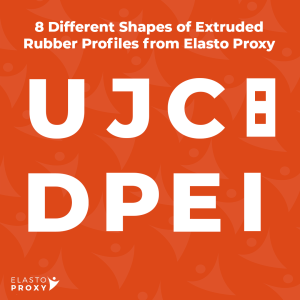Elasto Proxy explains what engineers need to know about choosing sound absorption materials for acoustic insulation in mobile equipment.
Part 1 of this series examined three components of sound (source, path, and receiver) and three types of acoustic insulation (absorbers, barriers, and dampers). Part 2 takes a closer look at sound absorbers, a type of acoustic insulation that’s used both at the source of the sound and at the receiver.
By applying the information in this article, engineers can choose the right sound absorbing materials for applications such as aerospace, defense, infrastructure, mobile equipment, and stainless steel and food equipment.
Acoustical Foams and Facings for Sound Absorption
Many different types of sound absorption materials are available, but typically open cell acoustical foams are used. Sound energy passes through each cell and is converted into small amounts of low-grade heat that’s dissipated easily. Acoustic performance remains predictable because the uniformity of each cell is controlled carefully by the foam manufacturer.
Most sound absorbers are made of polyester, polyurethane, urethane, or melamine. These materials come in different thicknesses and can be combined with specialized facings that impart specific properties such as resistance to dirt, fire, moisture, chemicals, and abrasion. Facings can increase sound absorption at specific frequencies, and may also provide a decorative, durable, or cleanable finish.
Sound Absorption: Acoustic Insulation Examples
Elasto Proxy can recommend sound absorber foams and facings, and will fabricate the materials you select with speed and precision. At our manufacturing center in Boisbriand, Quebec, Canada, we can even combine different types of insulating materials to build custom insulation “sandwiches”.
Depending on your application, we may recommend sound-absorbing materials like these:
- Un-faced polyester or polyurethane foams that maximize sound absorption
- Aluminized polyester faced foams for hostile environments that must remain clean
- Thin, dense embossed foams with sound absorption properties that are normally associated with much thicker materials
- Urethane faced foams that reduce the ingress of dirt, particles, and debris
- Convoluted foams with increased surface area for enhanced sound absorption
- Vinyl faced foams that absorb low frequencies.
- Polyimide foams that resist fire and meet flammability requirements
With our strong supplier network, Elasto Proxy can also recommend acoustical foams that meet military requirements for very low smoke, a wide temperature range, and extremely low outgassing. We can also help you meet flame, smoke, and toxicity (FST) requirements for the mass transit industry.
What You Need to Know Sound Absorbers
To specify the right sound-absorbing acoustical foams, engineers need to ask themselves a series of questions about the application. Elasto Proxy can help you with this process, and is ready to apply our application knowledge and technical expertise. Each application is different, but this list of questions is a good place to begin.
- What is the maximum insulation thickness that your application can support?
- Are you trying to insulate an area where there’s air flow resistance, or can air flow in and out?
- Do you need facing materials that can absorb a specific frequency or frequencies?
- Do you need facing materials for protection? If so, what are you protecting against?
- If the acoustical foam must provide flame resistance, what is the flame rating you need to meet?
- Will the acoustic insulation remain stationary, or be subjected to opening, closing, and bending?
- Will you add the insulation to structural components where there’s vibration?
- Your application may require you to ask and answer additional questions, but start with this list as you talk to Elasto Proxy about material selection.
Find Acoustic Insulation for Sound Absorption
Do you need acoustic insulation that meets all of your application requirements? Elasto Proxy is ready to help. For more information, contact us.








